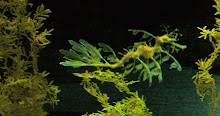Welcome (back) to Weirdbeautiful
Just three links today-
The first is this cute picture of a
baby panda-
The second, is to a gallery of adorable wildlife
photographs including a baby tiger and monkey-
The third is somewhat less cute; an
article about the DNA of Black Death, which has now been isolated from bodies
in plague pits and analyzed scientifically-
Some years ago (circa 1999/2000),
when I was still a microbiologist and busily looking for a PhD studentship, I was
interviewed for a project looking at virulence in foot-and-mouth disease. Over
the course of the interview, it became apparent that the project would,
essentially, involve devoting three years of my life to examining a small
section of RNA at one end of the Virus’s genome and culminate- in all
probability- in a single scientific paper on the subject. The aim was to
investigate which mutations caused the virus to become more deadly/virulent and
which, less so. If I remember correctly, the section of RNA to be examined was only
around 100-bases long and it seemed such a tiny specialization that, at that point- mid interview- my interest in the project nose-dived. Perhaps that was shallow or superficial, but it is probably not a unique experience.
As students, we are taught in summary and we view the bigger picture. But, as a researcher, one toils every day on a tiny piece often of a tiny puzzle; each day of research is just a drop in the ocean of a research career and that is a drop in the wider ocean of science itself. It is easy to sit, absolutely rapt, in
lectures about virology, to marvel at the ingenuity of past microbiologists
and to be excited by the prospect of working
on similar puzzles. The problem, is that reality- in the form of
various doctoral projects- often does not seem to match up. For this reason, the most enthusiastic
students do not always make the most eager researchers.
On the other hand, being funded to spend three years working on a project that does capture your imagination, is a really wonderful experience. For my part, I switched
to zoology, studied jellyfish and spent three and a half awesome, globe-trotting years working on about a dozen different species.
Incidentally, a couple of
years after that foot-and-mouth PhD interview, the UK suffered a very costly, widespread
and fairly unexpected foot-and-mouth outbreak. So, whoever did get that studentship
must have taken some pleasure in the fact that their project, although narrow
in focus, has undoubtedly proven useful- arguably, far more useful for mankind than my own doctoral research, but that is another issue altogether...
You can find more on foot-and-mouth
disease [here] and on black death [here]. The full-text of the scientific study
on black death mentioned above is currently available free online [here].





